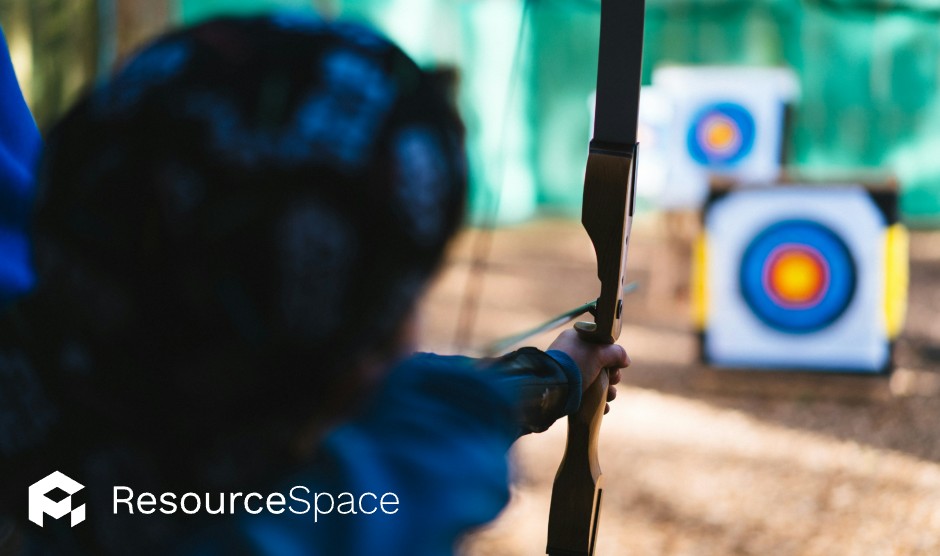
Fairtrade communications staff around the world really appreciate ResourceSpace. It's proven invaluable as a one-stop for sharing and storing all our images and brand assets. I don't know how we'd manage without it!
Blog
9th December 2024

Competing for the attention of the general public has never been more challenging, with a seemingly endless stream of new digital and in-person experiences offering people a huge amount of choice for how they spend their time.
For museums, understanding and engaging with their audience is essential for success, as it allows them to tailor experiences, communications and programmes, and provides the best chance of resonating with visitors—but how do museums decide who their target audience is, and, once identified, how can they boost museum audience engagement?
READ MORE: How to develop engaging virtual museum tours
Understanding your audience is incredibly important for museums, galleries and heritage institutions that want to increase footfall and engage the right people with marketing messaging.
By knowing who your visitors are – including their interests, demographics and motivations – you can tailor exhibits, programmes and communications to meet their unique preferences. This enhances overall visitor satisfaction, leading to positive word-of-mouth and repeat attendance, while a well-defined audience strategy can also guide resource allocation, ensuring marketing budgets are spent on initiatives with the greatest impact.
Audience insights also help museums diversify their reach, attracting underrepresented groups and fostering inclusivity. This not only strengthens community ties but also enriches the institution by incorporating broader perspectives, and can support grant applications and partnerships by demonstrating your museum’s understanding of its role in serving the public.
In a competitive arts and heritage sector, knowing your audience isn’t just beneficial – it’s essential.
Understanding your target audience and building an accurate profile requires a lot more than guesswork and assumptions; you need to collect quantitative and qualitative data about the people that visit the museum. This can be carried out both online and offline to create an accurate and comprehensive profile of your target audience.
Start by reviewing historic data on previous visitors, as this will be one of the best resources for building your audience profiles initially.
If you don’t have much historical data, now's the time to start collecting it in earnest. Surveying visitors and followers is the best way - and it’s a very valuable exercise even if you do have a good level of previous information to fall back on.
For most museums, there are two groups you can leverage: physical museum visitors and digital followers.
For in-person visitors, hand out questionnaires at museum events or make them available around the museum, while dedicated staff can also gather feedback from visitors by conducting mini-interviews.
When it comes to digital audiences, online surveys and polls can work, although you might have to offer incentives to encourage users to fill them out.
Not every potential museum visitor is going to respond in the same way to the same messaging, so once you’ve collected data on their demographics, what they’re interested in and their communication preferences, you need to segment them into specific groups.
Create different ‘personas’ that represent the main groups that make up your audience, for example ‘The Art Enthusiast’, ‘The Tourist’ or ‘The Primary School Teacher’.
These personas need more than just names, and these documents should include broad demographic information, what their challenges are and how you can solve them, how they like to be communicated with and where they spend their time online.
Defining your broad museum target audience personas is an effective strategy for driving new visitors, but you can take this targeting one step further with data-driven personalisation.
A customer relationship management (CRM) platform will store all of the information you have on previous visitors and subscribers, and this data can be leveraged to personalise marketing messaging and ensure the right people receive the right communication. For example, if someone has previously visited an exhibit about ancient Egypt, they should be among the first to hear about your new virtual reality Pyramid experience.
Once you’ve got a clear idea of who your target audience is, you need to concentrate on how to get in front of them.
Your persona profiles should include details on the sorts of content each audience segment likes to consume and where they spend time online. For example, age group plays a big factor in which social media platforms they use, while you might be able to reach a ‘Teacher’ profile by advertising in certain education sector publications.
READ MORE: Promoting museum collections on social media beginner's guide
Reaching museum visitors effectively is going to require some budget, as unfortunately the ‘organic reach’—that is, the number of digital impressions your content can achieve without sponsoring it—of digital content is very low for all but the biggest brands.
This doesn’t mean you have to spend a fortune though, and the amount you need to spend in order to get in front of thousands of people is in the hundreds, not (necessarily) thousands—although the more engaging your content is the better. Another benefit of social media ads is that you can define very granular audiences for your ads, which maximises the ROI from your marketing budget.
Digital marketing has made it much easier for arts and heritage institutions to reach museum visitors, but that doesn’t mean traditional tactics don’t offer value too. Community outreach is still worthwhile, not least because your local target audience will often represent the ‘lowest hanging fruit’ in terms of new visitors.
With this in mind, consider collaborating with or aiming marketing campaigns at local schools, community interest groups and local residents. You could even offer discounts and special offers for people and organisations based in a certain geographic area.
Your audience profiles shouldn’t just influence how you communicate with potential visitors, but what they experience when they arrive too.
If you know that families make up a big part of your visitor-base, for example during the summer holidays, you can create engaging and interactive museum exhibits that are designed to appeal to children and adults alike.
The feedback you collect from visitors should also be recorded and used to improve exhibitions in the future. Perhaps you’ll discover that interactive exhibits receive the best feedback, or your brand new augmented reality-powered experience is getting rave reviews. You should constantly be giving visitors opportunities to deliver feedback - and acting on it accordingly.
To create tailored experiences and communication you need access to a range of content assets, but this could become hard to keep track of if it’s not properly organised and managed.
A Digital Asset Management system like ResourceSpace empowers arts and heritage institutions to take control of their assets and ensures they are always used in the right way, for the right audience and to maximum effect.
READ MORE: Why ResourceSpace is perfect for… arts and heritage
Advanced metadata tagging and the creation of specific asset collections make it easier to find the perfect content for marketing and sales collateral, as well as new exhibitions, while granular permission sets ensure museum staff and trusted third parties can only access the assets most relevant to them.
To find out more about how ResourceSpace supports arts and heritage institutions, including why we’re trusted by some of the world’s leading museums and galleries, get in touch with our expert team today. Alternatively, book your free ResourceSpace demo below for your chance to see the platform in action.
to social media and engagement metrics to insights interests and #MuseumMarketing
#VisitorInsights
#CulturalInstitutions
#CommunityEngagement
#ArtsAndHeritage